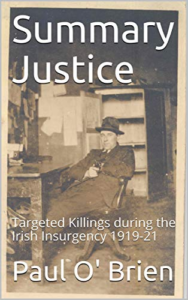
Summary Justice: Targeted Killings during the Irish Insurgency 1919-21
The campaign fought in Ireland between 1919 to 1921, between the Irish Republican Army and the British Crown in Ireland, was one of insurgency and counter-insurgency warfare.
While many of the ambushes and skirmishes between the two sides are well documented, there are several killings that have gone almost unnoticed during this period. While the killings of prominent individuals made headlines, others were forgotten, written off as acts of war.
Both sides resorted to targeted killings, the ‘taking out’ of specific individuals whom they believed were a threat or a danger to their cause. These killings were in many cases, meticulously planned and carried out with a cold-blooded intent.
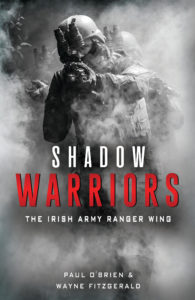
Shadow Warriors: The Irish Army Ranger Wing
This is the first and only authoritative account of the Irish Army Ranger Wing. Formed in the spring of 1980, this special forces’ unit is made up of the best of the best, selected through tough competition and trained in an extraordinary range of skills. Despite being deployed on active service both at home and on United Nations missions in trouble hotspots abroad, including Liberia, Mali and Lebanon, the Rangers prefer to stay out of the limelight.
Now, military historian Paul O’Brien and Sergeant Wayne Fitzgerald, editor of An Cosantóir: The Defence Forces Magazine, have been granted access to their closed and clandestine world. With accounts of the unit’s inception, their arduous selection process, their training and their national and international missions, Shadow Warriors provides an unprecedented look at Ireland’s toughest army unit.
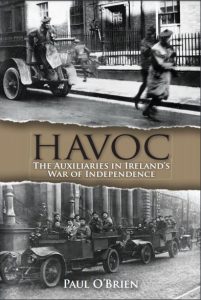
Havoc: The Auxiliaries in Ireland’s War of Independence
In 1919, Ireland was plunged into a brutal war of insurgency and counter-insurgency that ripped the country and its population apart.
Tasked with terrorising the terrorists, the Auxiliary Division of the RIC blasted their way into Irish history, leaving a legacy of death, hate and destruction in their wake. Havoc recounts the story of the Auxiliary Division of the Royal Irish Constabulary, considered by many to be the most notorious police force in the history of the British Isles but overlooked as one of the 20th century’s first specialist forces.
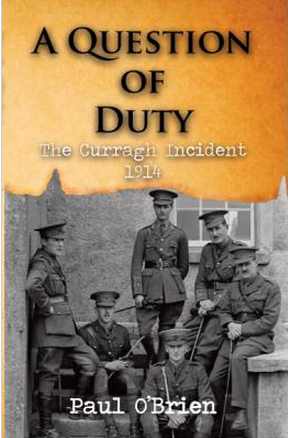
A Question of Duty: The Curragh Incident, 1914
As the world marched to war in 1914, the Army of the British Empire was secretly recovering from one of the most momentous events of its history.
In the Curragh Army Camp in the rolling countryside of County Kildare, a senior British General and his officers had threatened to resign rather than deploy their forces to Ulster in response to threats from Loyalists there refusing to accept Home Rule.
This was the so-called Curragh Mutiny, which precipitated the most serious crisis of civil-military relations in modern British history.
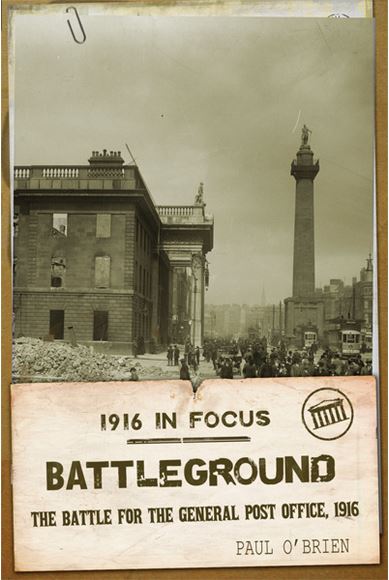
Battleground: The Battle for the General Post Office 1916
On Easter Monday, 24th April 1916, members of the Irish Citizen Army and the Irish Volunteers, under the command of Pádraig Pearse and James Connolly, occupied the General Post Office in Sackville Street, Dublin.
From the portico of the iconic building, an independent Irish Republic was declared. For seven days, this newly proclaimed republic fought a week-long bloody engagement with British Crown Forces as part of the 1916 Rising that would see hundreds die and Dublin city reduced to rubble after an intensive military bombardment.
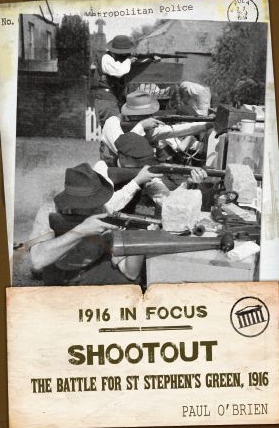
Shootout: The Battle For St. Stephen’s Green, 1916
As the Proclamation of the Irish Republic was being read from the steps of the. General Post Office on Sackville Street on Easter Monday 24th April 1916, 160 members of the Irish Citizen Army under Commandant Michael Mallin were taking up position around St. Stephen’s Green. For seven days, from their posts in St. Stephen’s Green and City Hall, this small force of men and women fought against British soldiers as they struggled to protect the newly proclaimed Irish Republic. For almost a century, accusations of poor strategic awareness and a lack of organisation have been levelled against Mallin and his force for their actions during that Easter week.
In this new work, Paul O’Brien shows that, despite being outnumbered and outgunned, Mallin carried out his orders and fought with tenacity during this vital part of the Easter Rising. Paul O’Brien’s expertise on the period and fascination with it shines through – from Entertainment.ie
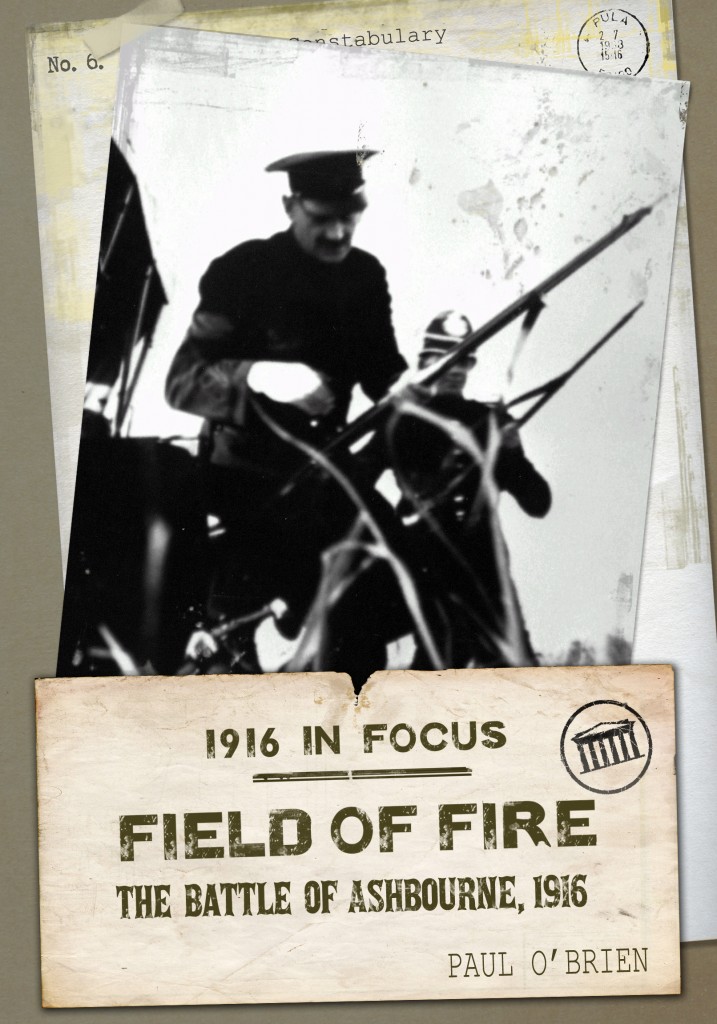
Field of Fire: The Battle of Ashbourne, 1916
(Fingal) Battalion of the Irish Volunteers under Commandant Thomas Ashe and Lieutenant Richard Mulcahy fought a battle against the Royal Irish Constabulary at Ashbourne in County Meath. After five hours of combat, the Irish Volunteers had killed eight policemen and wounded seventeen others.
This is the true story of a horrific battle outside of Dublin city, a battle that would be a template for many others that were to come later during the Irish War for Independence.
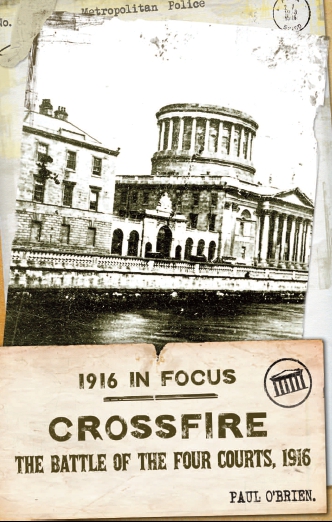
Crossfire: The Battle for the Four Courts, 1916
On Easter Monday 1916 Commandant Edward Daly commanding the 1st Battalion of the Irish Volunteers occupied the Four Courts and the surrounding area.
Crossfire, 1916 & the Battle for the Four Courts is the true story of one of the bloodiest engagements against crown forces in Dublin city during the 1916 Rising. Surrounded and outgunned the Volunteers held their positions and were the last Battalion of the Rising to surrender. This book examines the battles that were fought in and around the Four Courts area of Dublin city and the atrocities that were uncovered on North King Street as the Rising came to an end.
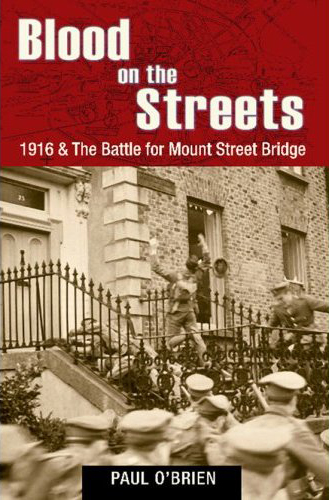
Blood on the Streets: 1916 and the Battle for Mount Street Bridge
Released in 2008 Blood on the Streets, 1916 and the battle for Mount Street Bridge explores what really happened during the battle for Mount Street Bridge.
Based around the bridge over the canal at Mount Street, three well-positioned groups of Volunteers led by Lieutenant Michael Malone held out against a far greater number of British soldiers arriving from Dun Laoghaire. This controversial battle resulted in the British crown forces suffering their heaviest losses during the Rising.
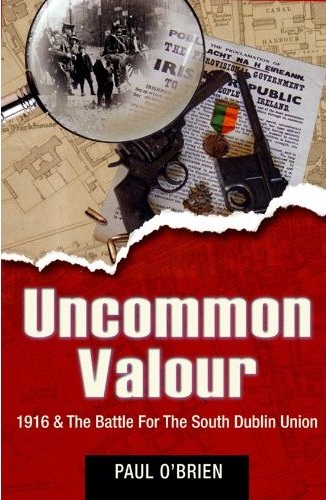
Uncommon Valour: 1916 and the Battle for South Dublin Union
The second book in the series was released in February 2010 and is entitled Uncommon Valour, 1916 and the battle for the South Dublin Union. Historians because of its complicity often overlook this engagement.
Commandant Eamonn Ceannt and 120 men of the 4th Battalion of the Irish Volunteers occupied the South Dublin Union, a workhouse and hospital spread over fifty-two acres near James Street, Dublin.
